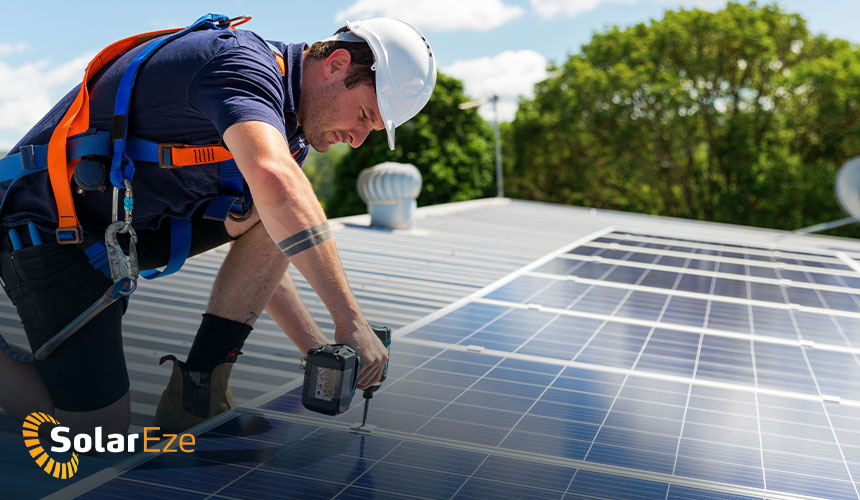Will Solar Panel Prices Rise in 2023?
Prepare for Your Solar Dreams to Cost More: Prices to Rise in 2023 in Queensland. Don’t Miss Out on This Critical Info!
15+ Years Experience
Financing Available
10 Years Warranty
CEC Qualified Installers
Solar power has been hailed as the answer to our energy woes, promising a cleaner and more sustainable future. However, the rising demand for solar panels is expected to drive up installation costs by 2023.
The cost of solar panels has been decreasing in recent years, making it more accessible to Queensland homeowners and businesses alike. However, the increasing costs of raw materials, labour, and land, as well as decreasing solar rebates, are contributing to this rise.
As we approach 2023, it is important to understand the factors that are driving up the cost of solar panel installation and how it will impact the demand for this technology.
In this article, we will explore the different types of solar panels available, the factors that are affecting installation costs, the government rebates that are available, and the benefits of solar systems.
Types of Solar Panels
The pre-existing knowledge of solar panel technology and installation costs informs that understanding the types of solar panels, including monocrystalline, polycrystalline, and thin-film, is important when considering the overall startup and long-term costs of a solar power system.
- Monocrystalline solar panels are the most efficient and have a longer lifespan than polycrystalline panels, but they are also the most expensive.
- Polycrystalline solar panels, on the other hand, are less efficient and less expensive than monocrystalline panels.
- Thin-film solar panels are the least expensive and least efficient type of solar panel.
When choosing between monocrystalline and polycrystalline solar panels, it is important to consider the cost-benefit analysis.
- Monocrystalline panels may be more expensive, but they offer greater efficiency and a longer lifespan.
- Polycrystalline panels may be less efficient, but they are less expensive and may be a better investment in the long run.
- When it comes to thin-film versus traditional panels, the former is less expensive and easier to install, but they are also less efficient and have a shorter lifespan.
Ultimately, the choice of solar panel type will depend on individual needs and budget constraints.
Factors Affecting Installation Costs
Factors such as installation location, system size, and the number and weight of panels can significantly influence the overall cost of installation. For instance, installing solar panels in a rural area may require additional transportation costs for equipment and labour, whereas commercial solar installations may require more specialised equipment and permits.
The size and weight of the solar panels can also affect installation costs, as larger and heavier panels may require more structural support and additional labour to install. Additionally, the dodgy marketing strategies of solar companies can impact solar panel installation costs, as companies may offer different pricing and financing options to attract customers.
Furthermore, it is important to note that the cost of installation is just one aspect of the overall cost of a solar system. Other factors such as maintenance and repair costs, as well as energy storage options, should also be considered when evaluating the long-term cost-effectiveness of a solar system.
Additionally, government rebates and subsidies can offset some of the installation costs, but these programs may change over time. Therefore, it is crucial for homeowners and businesses to carefully evaluate their options and work with reputable solar companies to ensure a cost-effective and sustainable solar system installation.
Solar Subsidies and Rebates
Government policies have been put in place to encourage the adoption of solar systems by homeowners and businesses.
Solar subsidies and rebates are available to offset some of the costs associated with installation, making it more affordable for consumers. These government incentives can cover a significant percentage of the overall expenditure and provide long-term cost-saving advantages.
The availability and amount of solar subsidies and rebates vary depending on the location and government policies.
It is important for consumers to research and understand the available incentives in their area to maximise their savings.
In addition to the financial benefits, the installation of solar systems can also contribute to a more sustainable future by reducing carbon emissions and reliance on fossil fuels.
Benefits and Installation Timing
Installation timing and potential savings are important considerations for individuals and businesses interested in adopting solar energy. To maximise the benefits of solar energy, it is essential to install solar panels as soon as possible.
The cost of solar panels is likely to increase in 2023 due to the rising prices of raw materials, labour, and land, among other factors. Therefore, homeowners and businesses should take advantage of the current prices and government incentives to install solar panels. By doing so, they can benefit from long-term cost savings and reduce their environmental impact.
The savings potential of solar energy depends on several factors, including the size of the solar panel system, the amount of sunlight, and the panel’s efficiency. However, in general, solar energy offers significant savings on energy bills over time.
Additionally, solar panels contribute to lower energy costs, promote energy independence, and reduce greenhouse gas emissions. By investing in solar energy, individuals and businesses can make a positive impact on the environment while saving money in the long run.
Therefore, it is important to consider the savings potential and environmental impact of solar energy when deciding on installation timing and system size.
Out Final Thoughts
In summary, the rise in solar panel prices may seem daunting, but it should not discourage Queenslanders from investing in solar power. By choosing the right type of solar panel, understanding the factors affecting installation costs, and taking advantage of available subsidies and rebates, individuals can still reap the benefits of solar power.
As the adage goes, ‘where there is a will, there is a way,’ and the same applies to solar power. Just as the sun rises every day, so too should our commitment to a sustainable future through the use of solar power.





No Comments